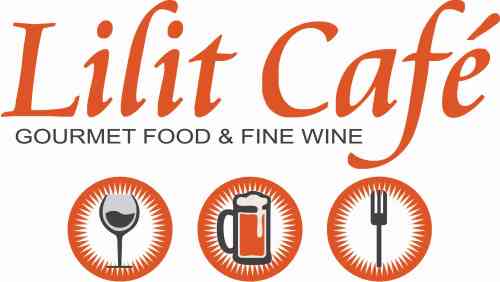Wildflower honey is derived from a mix of flowers within a three-mile radius of the beehive, making it a multifloral or polyfloral product. The primary factors influencing the flavor, taste, structure, and texture of honey are its botanical and geographical origins. Other minor factors include beekeeping methods and storage conditions.
Honey bees, being generalist pollinators, obtain their nutritional resources from a wide range of sources accessible to their short, stubby proboscis. Consequently, the quality and taste of honey can vary significantly based on the region and time of year. The unique flavor and intensity result from a haphazard collection of nectar from the local plant life and, to some extent, the hive’s annual blossom preferences.
Wildflower Honey is Special, But How?
For starters, it has many different flavors you can choose from.
Sardinian wildflower honey is renowned for its deep hue and robust taste, considered among the purest and most flavorful forms. The Italian island of Sardinia provides numerous organic pastures free from GMOs (genetically modified organisms) and a range of pesticides, as prohibited by law.
Arizona wildflower honey typically blends cat’s claw, mesquite, palo verde, and various desert wildflowers. The result you get is a pleasing, mild taste and a light to medium-amber coloration.
Georgia wildflower honey is commonly derived from gallberry, sawtooth palmetto, tulip poplar, and white holly blossoms. It tends to be lighter than Arizona and darker than Sardinian honey, offering an overall neutral honey flavor.
Health Benefits Of Pure, Raw, And Organic Wildflower Honey
For Allergy Relief
Raw wildflower honey, derived from wild honeybees through in-season pollination, contains trace amounts of pollen, along with immune system-boosting antioxidants and micronutrients. Studies indicate that consistent consumption of it during allergy season can alleviate symptoms like watery eyes, runny nose, nasal drip, and persistent cough.
For Improved Digestion
Honey, a natural anti-inflammatory known for aiding superficial skin wounds, also benefits the stomach and intestines, which may become inflamed after consuming certain foods. The anti-microbial properties in honey can combat stubborn stomach and intestinal bacteria such as Helicobacter pylori.
For Elevated Antioxidant Levels
Research from the University of California Davis reveals that regular consumption of raw honey from wild honeybees leads to a higher concentration of antioxidants in the bloodstream. Antioxidants play a crucial role in combating the harmful effects of free radicals, which damage healthy cells and contribute to the development of cancer and heart disease.
As A Cough Suppressant
Studies from Penn State College of Medicine suggest that honey can alleviate symptoms of upper respiratory tract infections. Honey’s effects on cough suppression are comparable to those provided by over-the-counter medications like dextromethorphan.
For Nourished Skin
It serves as a natural humectant, preserving moisture within the skin. Its natural anti-inflammatory properties make it effective in soothing irritated skin, particularly skin affected by hormonal fluctuations.
Is Wildflower Honey Processed?
Raw honey is sourced directly from beehives, maintaining all the enzymes, nutrients, and medicinal compounds beneficial for the human body. The extraction process of raw honey differs significantly from that of regular honey. In the case of wildflower honey, it is harvested from beehives and filtered through a nylon cloth to eliminate impurities such as honeycomb chunks or deceased bees.
On the contrary, processed honey undergoes intense pasteurization, leading to the loss of its nutritional compounds. Pasteurization involves subjecting the honey to high heat, causing the essential nutrients to be burned out. Some commercial products labeled as honey are not genuine. Fake honey typically comprises only one-third of actual honey, with the remaining two-thirds consisting of added sugar syrups extracted from plants like sugar cane, corn, or rice.
How Can We Identify the Processed Honey?
Typically composed of glucose and fructose extracted from flowers, organic honey from wildflower nectar contains a variety of bioactive plant compounds. A simple method to differentiate raw honey from processed honey is to pour it into a glass of water. Artificial honey dissolves immediately, with a few drops settling at the glass’s bottom. In contrast, organic honey maintains a thick paste-like consistency and doesn’t dissolve easily.
Raw honey comes in various consistencies, and medicinal honey is generally non-filtered, featuring a thick paste-like texture. Non-filtered honey contains nutritional elements like propolis, bee pollen, active enzymes, and even flecks of honeycomb, making it the healthiest option as it includes essential bee pollen nutrients not found in processed honey.
Commercially available honey is often not organic. Processed or over-pasteurized honey has a thin consistency, having undergone multiple filtration and processing steps to achieve a transparent and presentable structure. Unfortunately, processed honey offers minimal to no health benefits.
While some may perceive little difference between wildflower and processed honey, organic honey is utilized as an over-the-counter remedy for burns, wounds, and constipation. Research has demonstrated that organic wildflower honey is an effective cough remedy. Raw honey is also known to enhance immunity, provide energy, and aid in weight reduction.
The apparent lack of distinguishable health or skin improvements with honey usage may be attributed to the extensive processing it undergoes.
Does Wildflower Honey Expire?
It’s advisable to keep a jar of raw honey in your pantry, even though its physical and chemical makeup might change over time. After several months, the honey will start to crystallize from the bottom up. However, fret not – this is simply the glucose part of the mixture transforming into a solid sugar form.
Should crystallization occur, placing the jar in warm water will gradually liquefy the sugar grains. Regardless, the honey remains safe for consumption. Chemically, there might be variations in its color and aroma, but there’s no need to worry. Natural honey universally possesses antimicrobial properties, making it highly unlikely for anything unusual or moldy to develop in your jar.
The only concern is if your honey comes into contact with moisture. In such instances, fermentation may begin, and nobody wants to end up with honey beer. Apart from that, your honey will endure for many years – just remember to store it in a clean, moisture-free container.
Smiley Honey – Your go-to Choice for Organic Wildflower Honey
To reap the benefits of honey, it’s essential to opt for organic honey from a reliable brand. Smiley Honey, known for its commitment to quality, offers a comprehensive range of all-natural and organic honey varieties. Explore the diverse options available and indulge in the richness and authenticity our honey products bring to your table. Whether you’re seeking distinct flavors, pure organic goodness, or a reliable source of natural sweetness, we have you covered with a wide selection of premium honey products.













